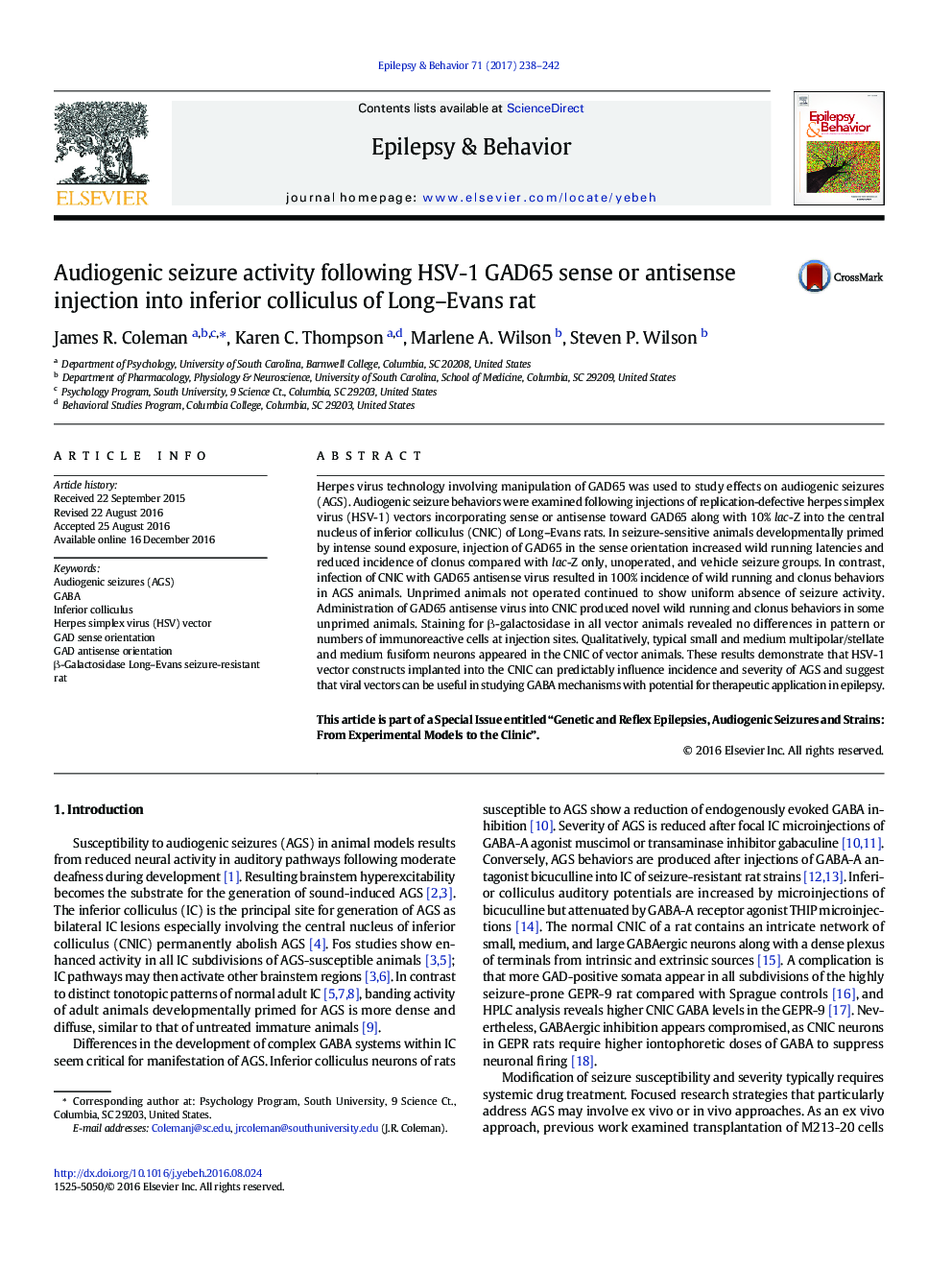| کد مقاله | کد نشریه | سال انتشار | مقاله انگلیسی | نسخه تمام متن |
|---|---|---|---|---|
| 5628443 | 1406374 | 2017 | 5 صفحه PDF | دانلود رایگان |

- Audiogenic seizure (AGS) behaviors were studied after HSV-1 GAD sense or GAD antisense injections into Long-Evans rat inferior colliculus.
- Injections of HSV-1 GAD in the sense orientation into AGS animals increased wild running latencies and reduced incidence of clonus.
- Antisense orientation injections sustained maximum seizure incidence of clonus in AGS animals, but produced de novo wild running and clonus in previously seizure-free animals.
- β-galactosidase staining of infected neurons revealed populations of multipolar/stellate and fusiform cells in CNIC.
- Results suggest that gene transfer methods are useful for modifying GABA mechanisms and seizure behaviors.
Herpes virus technology involving manipulation of GAD65 was used to study effects on audiogenic seizures (AGS). Audiogenic seizure behaviors were examined following injections of replication-defective herpes simplex virus (HSV-1) vectors incorporating sense or antisense toward GAD65 along with 10% lac-Z into the central nucleus of inferior colliculus (CNIC) of Long-Evans rats. In seizure-sensitive animals developmentally primed by intense sound exposure, injection of GAD65 in the sense orientation increased wild running latencies and reduced incidence of clonus compared with lac-Z only, unoperated, and vehicle seizure groups. In contrast, infection of CNIC with GAD65 antisense virus resulted in 100% incidence of wild running and clonus behaviors in AGS animals. Unprimed animals not operated continued to show uniform absence of seizure activity. Administration of GAD65 antisense virus into CNIC produced novel wild running and clonus behaviors in some unprimed animals. Staining for β-galactosidase in all vector animals revealed no differences in pattern or numbers of immunoreactive cells at injection sites. Qualitatively, typical small and medium multipolar/stellate and medium fusiform neurons appeared in the CNIC of vector animals. These results demonstrate that HSV-1 vector constructs implanted into the CNIC can predictably influence incidence and severity of AGS and suggest that viral vectors can be useful in studying GABA mechanisms with potential for therapeutic application in epilepsy.This article is part of a Special Issue entitled “Genetic and Reflex Epilepsies, Audiogenic Seizures and Strains: From Experimental Models to the Clinic”.
Journal: Epilepsy & Behavior - Volume 71, Part B, June 2017, Pages 238-242